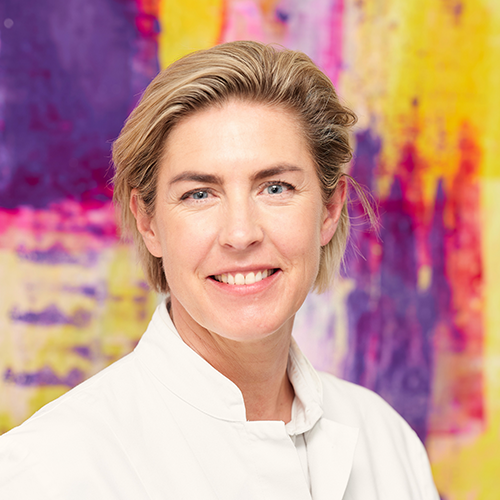Chronic itching in the genital area: lichen sclerosus
As gynecologists, we speak of the VULVA and use it to refer to the parts of the genitalia that are visible externally. Therefore, the term vulva describes the region from the pubic mount (consisting of fatty tissue and covered by hair) to the anus. This is where the clitoris with its foreskin, the large and small labia as well as the perineum, the skin between the vaginal entrance and anus, are located. In this area, symptoms that have a major impact on wellbeing occur frequently, most often itching. Mostly acute itching can be explained by a fungal infection and can be easily treated with common fungal medications. Lichen sclerosus, a chronic disease and the most common non-infectious skin disease of the vulva, must be clearly distinguished from fungal infections. Estimates suggest that 1 of 50 woman is affected. In many cases the diagnosis is only made in Women after menopause, but the disease often readily occurs in young women as well.
Symptoms of lichen sclerosus typically include:
- Itching
- Pain or burning sensation during sexual intercourse
- Cracks in the skin caused by scratching or sex
- The skin in the affected area becomes white and thickened
- The labia minora become smaller and the vaginal entrance becomes inelastic, similar to scarring
It is important to know that lichen sclerosus is not a sexually transmitted disease, is not contagious and (probably) belongs to the group of autoimmune diseases
The therapy of lichen sclerosus generally consists a topical therapy with the application of cortisone cream. The patient must be well accompanied in this regard, as this therapy is long-term, actually lifelong, and the success of the therapy must be monitored, also the patient must be well advised with regard to the frequency of application, because nobody is easy to motivate to undertake a long-term therapy. On the other hand, the skin has a high need for care with moisturizing ointments.
More recently, there are studies on the effect of the use of the fractionated CO2 laser in patients with lichen sclerosus, which are very promising. We have been using lasers as a therapy for some time as well and have had good experiences with our patients with lichen sclerosus in terms of symptoms and quality of life. However, laser therapy must also often be combined with topical cortisone products.
The laser therapy is not yet covered by the health insurance for this indication and costs 250 SFr per session. 3 sessions with an interval of 4 weeks are recommended.
Further information is also available on this site: www.lichensclerosus.ch
